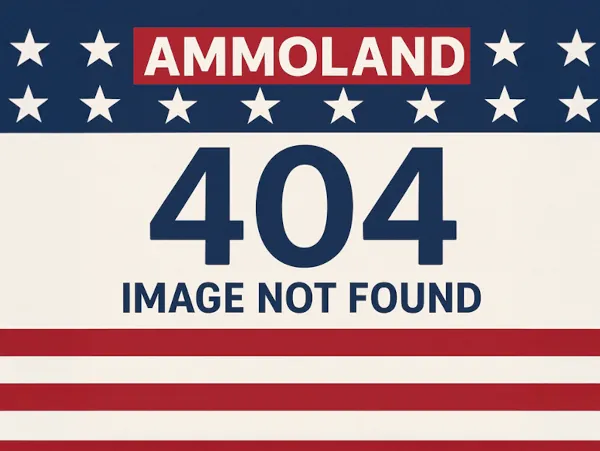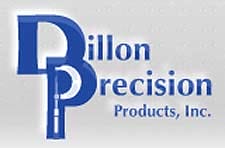United Nations Wants A Global Firearms Registration Computer
By Paul Gallant, Alan Chwick & Joanne D. Eisen


Scottsdale, AZ – -(Ammoland.com)- A legally binding, global Arms Trade Treaty (ATT) is being prepared in the back rooms of the UN.
One goal of the Treaty’s proponents is to create national weapon databases, leading to regional databases, and then to an eventual global database.
Countries will be charged with the duty to keep track, not only of all transfers, but also of the locations of all arms and ammunition, from manufacture to destruction. A UN discussion paper states “the advent of modern information technology… promises to be a boon to the establishment of an effective tracing system in many States.” But it will take a “global harmonized system of electronic registers” before the firearm-prohibitionists are satisfied.
The expectation for these databases is to provide the ability to trace weapons that have been used either by criminals or tyrants to commit crimes, in order to ensure that these people are caught and brought to justice.
Preventatively, tyrants with a history of human rights abuses will be denied access to weapons. Or so we are told.
The Treaty will cover seven categories of conventional weapons, which include aircraft and large artillery systems, plus small arms and light weapons (SALW), plus ammunition, or “7+1 +1.” Here, we concentrate only on small arms and light weapons. We will need hardware and software that has the capability to deal with the estimated world stockpile of 875 million firearms.
The first task on the path to a global database is the marking of weapons and weapon parts. Most major manufacturers already do so. But many weapons are not marked.
Our taxes, funneled through the Department of State, Office of Removal and Abatement, fund [firearms] marking and data collection programs in Costa Rica, Paraguay and the Bahamas. We also fund programs run by the Regional Center on Small Arms (RECSA) in Africa -comprised of countries such as Burundi, Djibouti, Eritrea, Ethiopia, Kenya and Rwanda.
How much of our tax money has been funding this?
In order to ascertain how much of our own US tax money has been funding this, we sent a FOIA request to the U.S. Department of State, Office of Weapons Removal and Abatement (WRA), but as of this writing, have not received any reply.
The marking machines provided by the WRA are sensitive to the environment, and require a certain degree of proficiency by the operator. It should come as no surprise that the RECSA program had been “temporarily halted as a result of the machines developing some technical problems.” The UN rationalizes these setbacks in third world countries as a step toward “capacity building.” Capacity building is an educational and developmental process that eventually, it is hoped, will enable third-world countries to catch up to Western technology. But the fact remains that these weapons must be properly marked, and third world countries fall short of such a capability.

In the firearm-prohibitionists’ zeal to create a peaceful world through total weapons control, they are determined that the 875 million small arms must be marked on at least three – and in many cases – six parts: the frame, barrel, firing pin, ejector, extractor and magazine. And some firearm-prohibitionist groups suggest that the slide should be marked, as well.
As each weapon – or each part – crosses a national border, an additional marking would need to be added.“Secondary markings” will add another layer of complexity. In Canada, the attempt to institute the UN’s proposed import marking scheme “met with serious setbacks.” Postponed several times since 2004, it is currently scheduled for completion in 2012.
If Canada had such difficulties, how could a country such as Nigeria accomplish this? It becomes even more confusing when parts are replaced or transferred. The paperwork that would be required, should one wish to replace the barrel or a worn-out firing pin, would be costly, time-consuming, and error-ridden.
Imagine the expense to us of changing a barrel, or replacing a firing pin, should our laws be harmonized with the UN’s “best practices.”
After marking, the entering of weapons into databases for the purpose of tracking begins. Even in relatively developed countries, the present condition of weapon databases is a nightmare. Canada’s justice Department has estimated the error rate in its registry’s database to lie between 71 and 91 percent. So, even in a modern, technologically advanced society, where cost was not a limiting factor and personnel are well educated, competent and well paid, there is an accuracy rate of only about 10-30 percent.
Additionally, “police have admitted it [their gun registry] has been breached by unknown hackers over 300 times.”
In Australia, the New South Wales Police Firearms Registry estimated its accuracy rate as 40 percent. And a few months ago, in March 2011, in the state of Western Australia, technical issues threw their licensing system into a “shambles.”
The police indicated that “they are working hard to reactivate the firearms infringement register, which will occur once they have completed the firearms registry stabilization project.”
Here in the U.S., it is evident that the same data-entry problems are endemic within our own databases.
In Colorado, it was recently reported by the Denver Post that 63 percent of the records entered by sheriffs’ offices contained inaccuracies. This single database, alone, consists of only 51,000 records, far smaller than what would be required for 875 million needed just for small arms, globally. In Texas, a computer system that tracked city-owned small arms failed to accurately keep track of their whereabouts, and about 30 percent of those inventoried weapons had gone missing. The San Antonio database tracked only 1,129 weapons.
It only gets worse from here because of a lack of “transparency.” “Transparency” means that all arms transfer data is revealed. However, in the previous decade, there was a 45-percent drop in the number of nations reporting conventional arms transfers to the UN Registry of Conventional Arms (UNROCA). As of September 2009, only 65 countries, out of nearly 200 countries, had reported any arms transfers for that year. And only a few more were expected to do so.
Compliance
The commonly used term that describes the willingness of individuals to inform their government of the weapons they possess is “compliance.”
Obviously, virtually 100 percent of the world’s criminals will never comply.
In Canada, LUFA (Canada’s Law-Abiding Unregistered Firearm Association, v/vvw.iufa.ca) admits to a 30-percent compliance level for that country’s handgun and long-gun registries. Donald Blake Webster, of the University of Toronto, noted that, “No country in the world has ever remotely approached full compliance with firearms owner licensing and registration.”
There is yet one final hurdle to overcome – the weapons-prohibitionists “global harmonized system” – their term for “interoperability.” Interoperability means that one database can be merged with another, and yet another, and yet still another. While this occurs in simple compatible systems, lack of such a capability is much more common. The complexity of language conversions will add another dimension to this dilemma.
Technically, a global weapons computer database containing the 7+1+1 might be possible, regionally and even globally. But the practical ability to implement such a system lies off the horizon. Costly, foolish schemes have rarely prevented tyrants and criminals from obtaining weapons.
About:
Dillon Precision is the only choice for all your reloading needs. Consider the quality and innovation behind each product, the lifetime “No BS” warranty, and the unparalleled reputation for post-sale service, and there simply isn’t any other option. Your only decision is which machine to buy. Dillon offers a machine for every budget or reloading need. From the “pistol only” Square Deal, the “workhorse” RL 550B, the fully progressive XL 650, to the commercial grade Super 1050. They even offer a progressive shotshell loader that blows away everything on the market. Visit: www.dillonprecision.com
